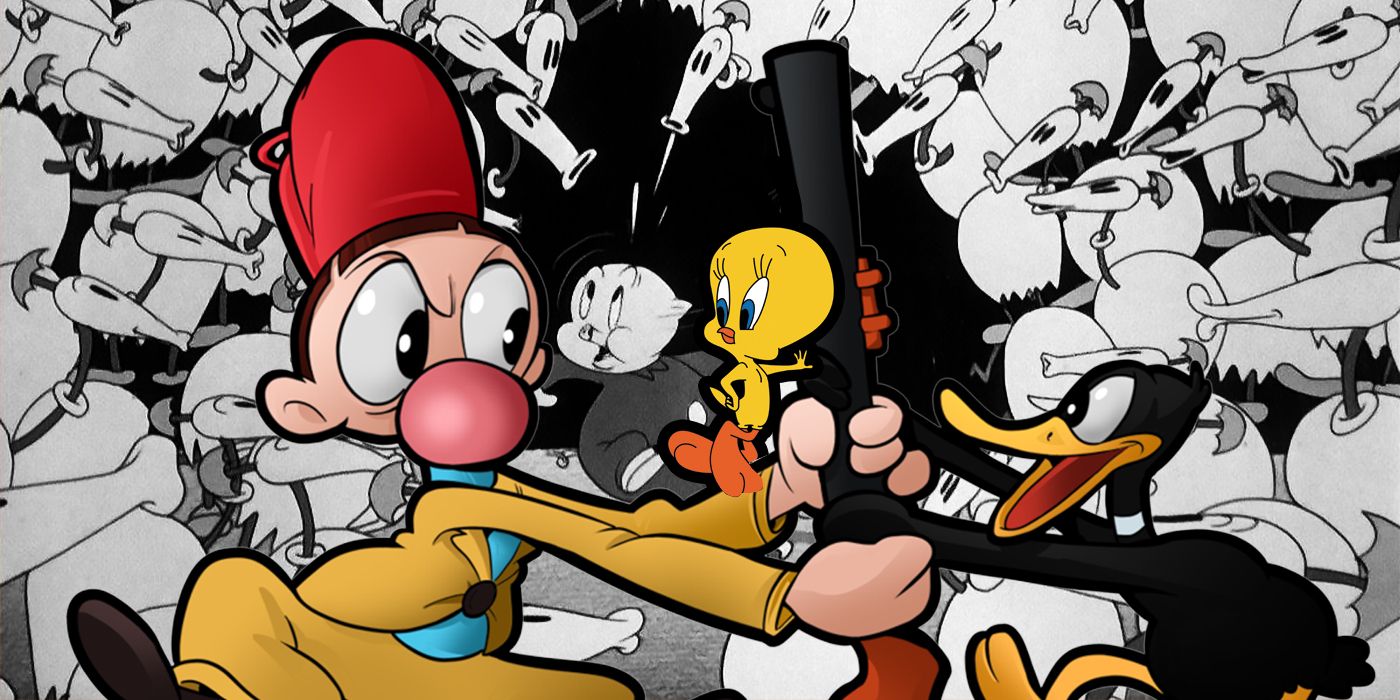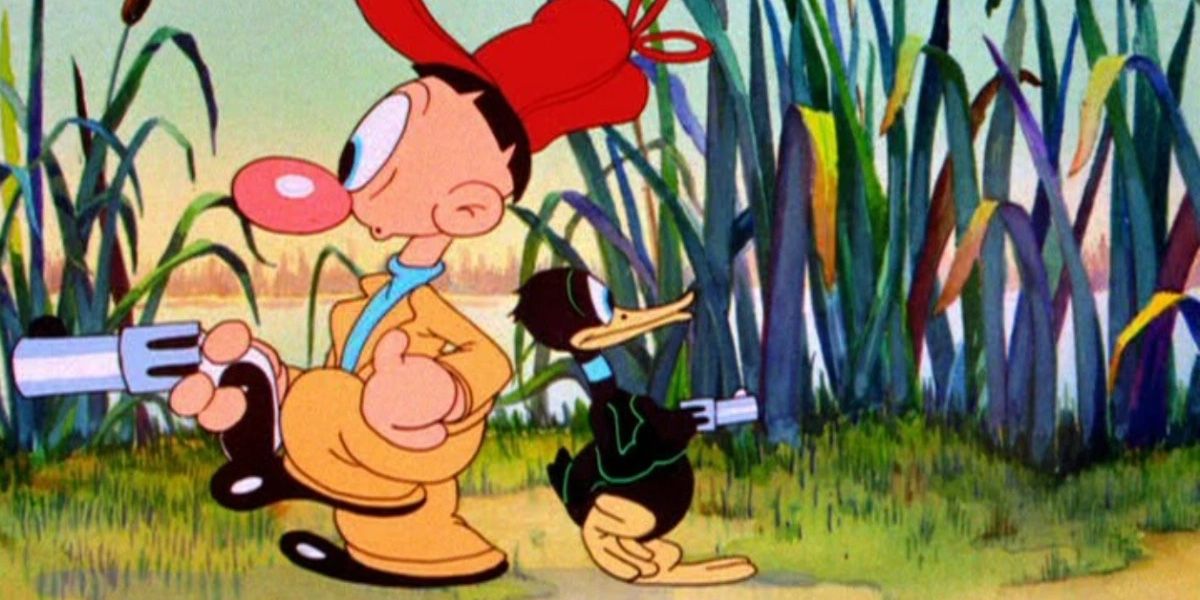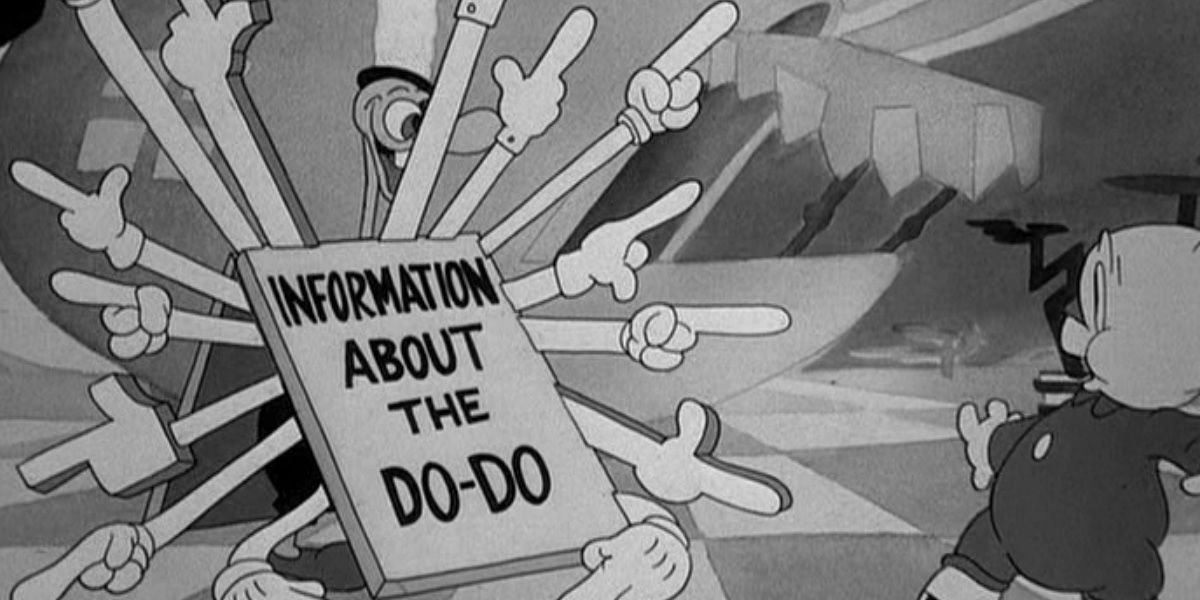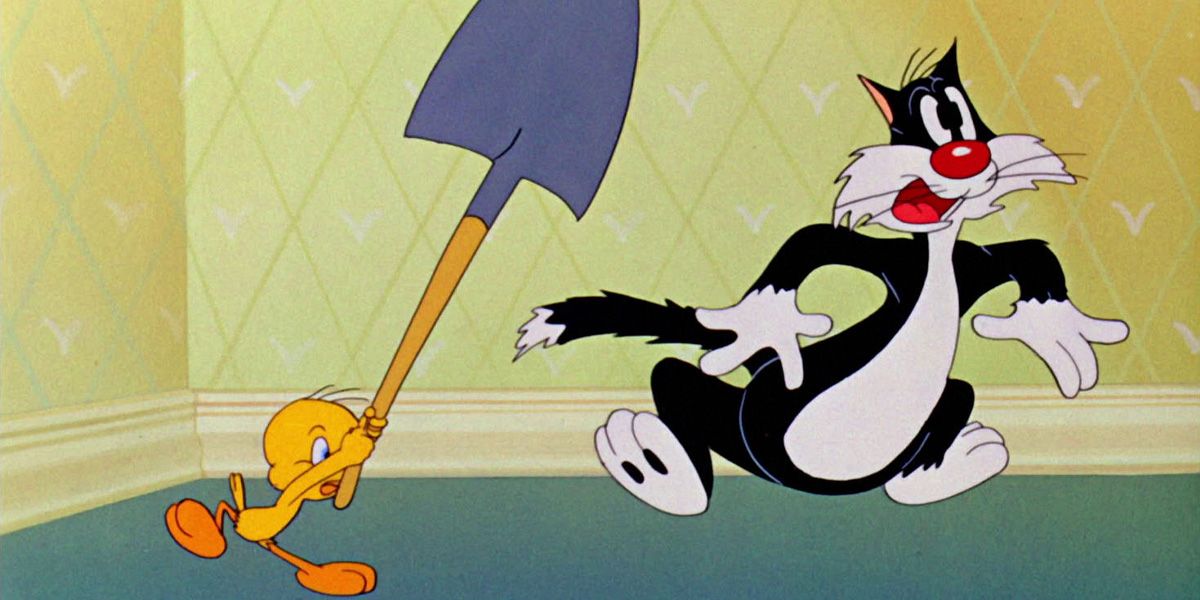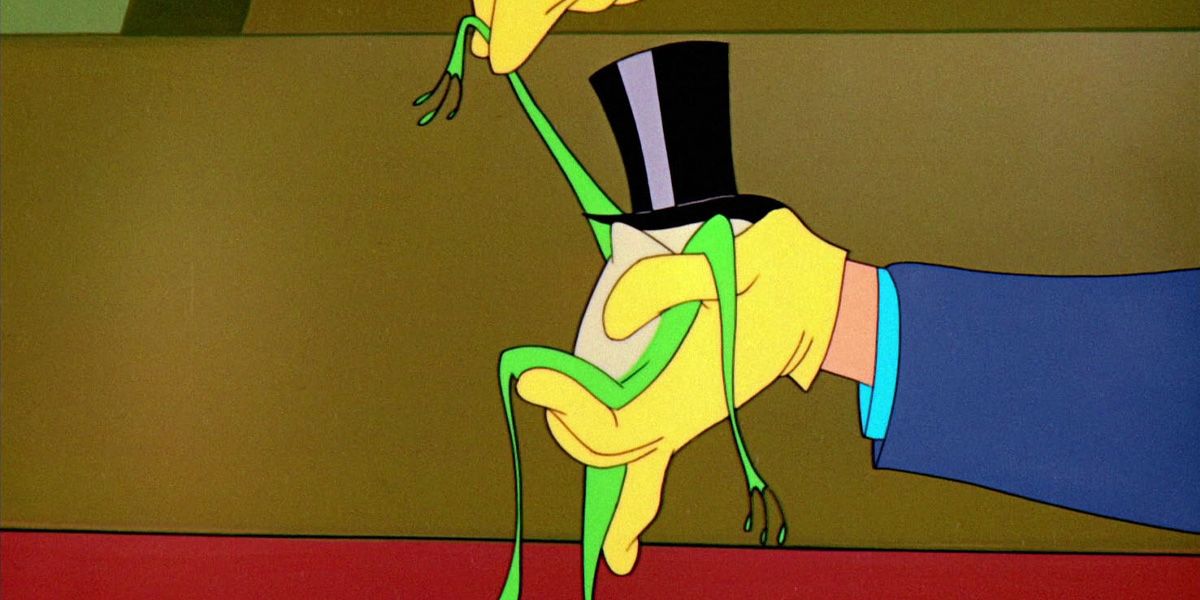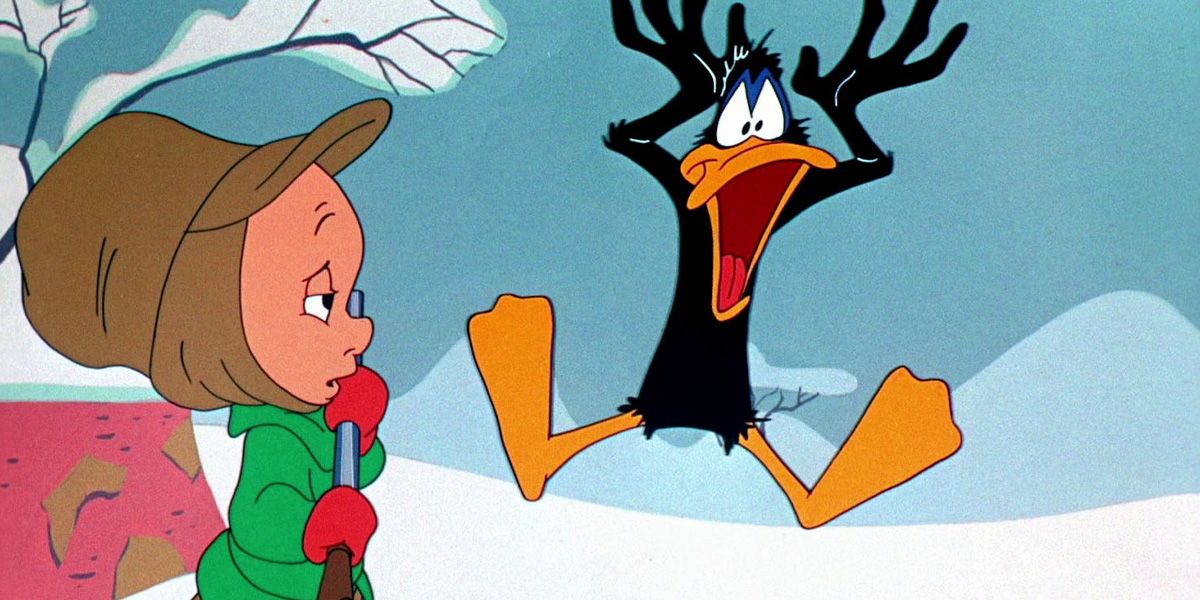HBO Max the new home of the classic Looney Tunes shorts that began it all, in HD and (more or less) chronological order. The collection isn’t complete; some cartoons have never undergone restoration, some have long been shelved for problematic content, and others remain absent for reasons unknown. But it’s the largest group of Looney Tunes available all in one place, and the best way to see what they were all about before their newest outing arrives.
Daffy Duck and Egghead
When the Looney Tunes began, they were largely imitations of Walt Disney’s musical, whimsical, and sentimental shorts. The man largely credited with making the Looney Tunes funny is director Tex Avery. The fast-talking Texan of Termite Terrace ramped up the pace, dialed up the sarcasm and violence, shattered the fourth wall, and created or co-created some of the most famous Looney Tunes stars, including lunatic cartoon poster child Daffy Duck.
Avery introduced Daffy in 1937’s Porky's Duck Hunt, but the following year, he put his duck’s wild personality - and the Looney Tunes’ no-holds-barred style of humor - on full display with Daffy Duck and Egghead. Up against an Elmer Fudd prototype, Daffy lisps, hoots, and flips circles around his would-be hunter, gets nosy with an interfering tortoise, stops the cartoon dead in its tracks to sing the Looney Tunes theme song (“The Merry-Go-Round Broke Down”), and ends up in cahoots with the ducks from the mental ward sent to collect him. Don’t think Egghead is left as a stiff straight man, though. He gets in on the gags as well, at one point getting so fed up with the fourth wall that he shoots a theater patron who can’t find his seat!
Porky in Wackyland
Tex Avery had a strong influence on later Looney Tunes directors, and his most devoted disciple was probably Bob Clampett. Clampett inherited Avery’s unit when the latter left Warner Bros. for MGM, and he continued to push the boundaries of animation. His cartoons abound with elastic bodies, breakneck pacing, disregard for all the laws of man and nature, and a high level of casual, amoral cruelty.
But Clampett’s work also leaned heavily into the surrealist movement, particularly the work of Salvador Dali, and nowhere was this expressed more than in 1938’s Porky in Wackyland. Ostensibly a lost African jungle housing the last remaining do-do bird, Wackyland is surrealism personified as setting. Clampett and his animators delight in traipsing through Dali-esque landscapes populated by roundheaded oddities. When the do-do finally appears, he bends Wackyland around him to torment the hapless Porky Pig for the rest of the cartoon. Porky in Wackyland’s exhibition of cartoon zaniness was so influential that the film was later remade, almost shot-for-shot, in Technicolor in 1948, and Wackyland became a major location decades later in Tiny Toon Adventures.
Tweetie Pie
The late 1930s and early 1940s - the heyday of Avery and Clampett - were when the Looney Tunes were at their most loony. By the end of World War II, both directors had left Warner Bros., and the cartoons began to change. The pace slowed, fewer gags went by per minute, and more structure came into the cartoons’ stories. Character personalities took the lead more than the wild impossibilities of animation.
Friz Freleng worked with the Looney Tunes from the beginning to the end of their classic run, and he became a director of his own unit in 1933, but the postwar years proved his breakout period. Freleng created Yosemite Sam and Speedy Gonzales, played a key role in developing Bugs Bunny, and won Warner Bros. cartoons their first Oscar in 1947 with the first Sylvester and Tweety cartoon, Tweetie Pie. Sylvester was a creation of Freleng’s; Tweety had been invented by Bob Clampett as a bald, violence-prone newborn, but Freleng reconceived the character as a sweet domesticated canary, protected from the “putty tat” menace by owner Granny, a fantastic run of luck, and Sylvester’s own impatience and ineptitude. The pairing gave Freleng material for years to follow.
One Froggy Evening
Most of the Looney Tunes shorts feature one or more of their recurring cartoon stars, and small wonder; just like in live-action, stars sell. But every director working at Warner Bros. took the odd cartoon to experiment with one-shot characters and concepts, and director Chuck Jones saw the best luck with them.
His One Froggy Evening, released in 1955, has a premise as simple as they come: a man finds a singing frog he can’t exploit for riches, because no one else hears it sing. The pace is leisurely for a seven-minute cartoon, and much of the action plays out in small, subtle movements. But the exuberance of Michigan J. Frog’s unseen performances, the increasingly absurd circumstances that keep him from the public eye, and the devastation that greed for the frog’s talents visits upon his finder make for an unforgettable short. One Froggy Evening has become one of the most acclaimed cartoons of all time, gave The WB television network a mascot, and kept “Hello! Ma Baby” in the public consciousness longer than anyone could have predicted.
Duck! Rabbit, Duck!
Of all the Looney Tunes directors, Chuck Jones’s films are among the most well-known with the general public, from original creations like the Coyote and Road Runner to his work with established stars Bugs and Daffy. With Freleng, Jones guided Bugs into his most endearing characterization as a slick trickster hero, and Jones was almost entirely responsible for transforming Daffy from the one-note screwball of his early years into a conniving psychological mess. Jones also put duck and rabbit together with Elmer Fudd for a trilogy of hunting cartoons, establishing possibly the most famous conflict in the Looney Tunes canon: 1951’s Rabbit Fire, 1952’s Rabbit Seasoning, and 1953’s Duck! Rabbit, Duck!
Duck! Rabbit, Duck! Is the least-known of the trilogy, but it has so much to recommend it. It’s the only one set in the winter, giving it a unique visual flair. Bugs is at his most cool under fire in this cartoon, effortlessly deflecting everything thrown his way. Elmer is at his most innocently befuddled and manipulated. But the show is stolen by Daffy when he falls into his most desperate display. Outfoxed by Bugs, his mandible thoroughly riddled with buckshot, the duck collapses into a nervous breakdown unmatched in the rest of the trilogy, in a feat of cartoon acting that’s both hilarious and poignant. Naturally, it leads into one final humiliation, for which Bugs gets the immortally-put blame: “you’re dethpicable!”

